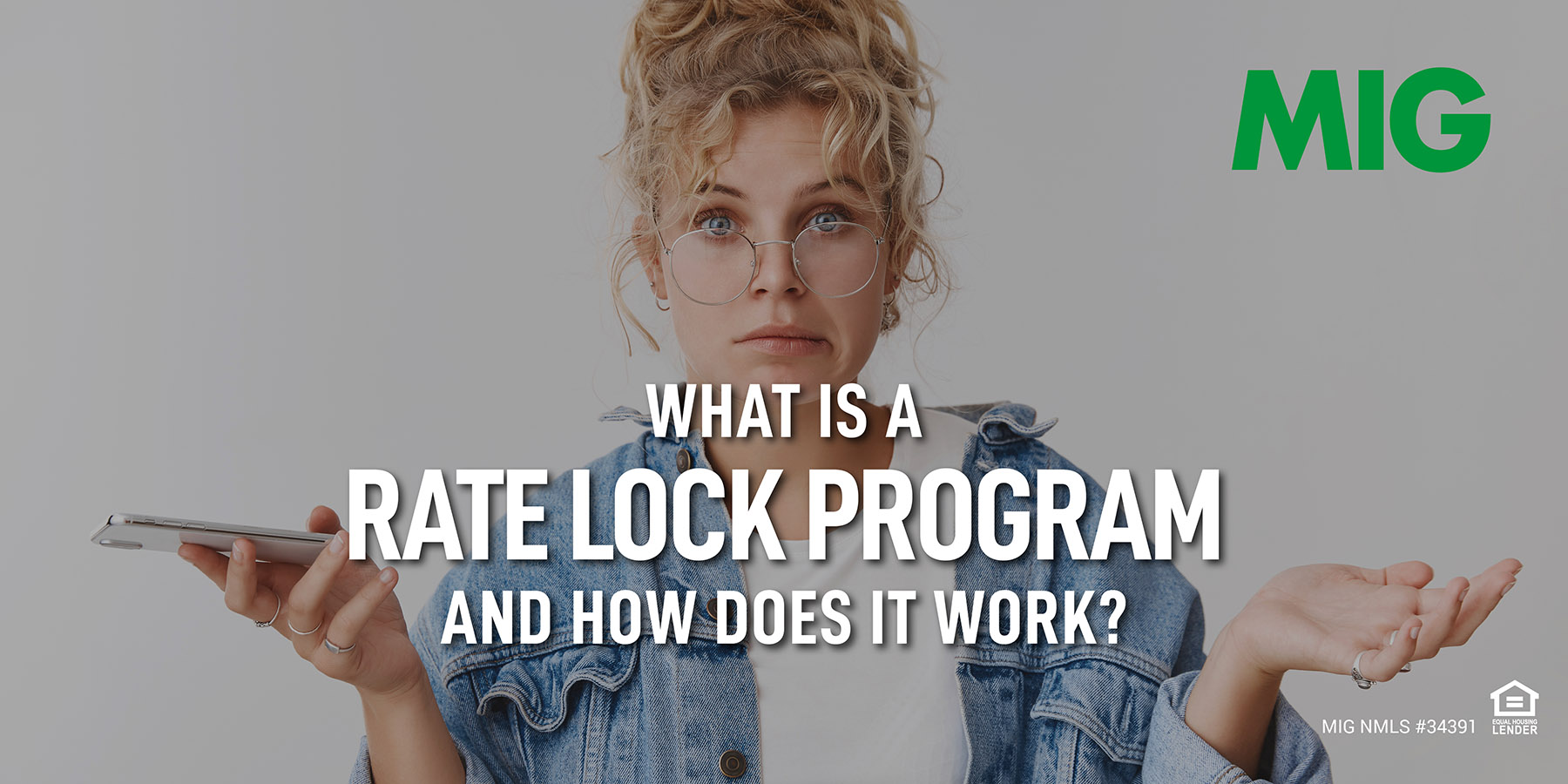
When you’re buying a house, your interest rate is an important component. It affects how big your monthly payment will be every month, and may even influence whether you can afford a home in the price range you want. This is especially true when interest rates are volatile, as they are in today’s market.
This is why knowing what a rate lock program is and understanding how it works is important. Read on for everything you need to know about a rate lock and how to use it to your advantage.
What Is a Rate Lock?
Mortgage interest rates move all the time. They may hover around the same rate for days or weeks, and then jump or dive the next day. Or, they may vary every day.
When you lock your mortgage rate, you ask your lender to secure the current rate for you to use for your mortgage loan. That way, no matter which way the interest rates go from now until you close, your rate stays the same.

When Should You Lock Your Rate?
Buyers frequently long for a crystal ball when deciding to lock in their interest rate. What if it goes down? Am I doing it too soon? And on it goes. This roller coaster can cause you tons of stress if you’re focused on getting the very lowest rate instead of getting a payment you can afford.
The time to wisely lock in your rate is after you’ve been approved for your loan amount and know you can afford the monthly payment. If, for example, you want to buy a $300,000 home and can secure a 30-year fixed loan rate of 5.75%, look at the potential monthly payment. Is that doable? If yes, then go ahead and lock in your rate. If it’s not affordable, you may need to either wait for rates to decrease (which is never a given), or shop for a less-expensive home.
How Do You Lock Your Mortgage Rate?
Your mortgage lender is the person who can lock in a rate for you. Good loan officers watch the interest rates all the time and can advise you of the daily rates. When you’re approved for your loan and ready to lock in the rate, ask your loan officer to make it happen. Make sure you ask all the questions and understand the terms of the rate lock beforehand to avoid surprises down the road.
How Long Does a Rate Lock Last?
Rate locks can vary in the length of time they’re valid. Typically, you can choose how long the rate lock is good for — 30 days, 60 days, or longer in some cases. Talk to your lender and determine about how long it will take to get to the closing table.
How Much Does a Mortgage Rate Lock Cost?
In most cases, you won’t pay upfront for locking in your interest rate. The fee may, however, be added into your total mortgage loan costs. Lenders charge different prices for a rate lock, but they’re usually around .25% of the total loan value. For example, if you’re buying a $300,000 home and are paying $60,000 down, your mortgage loan amount will be $240,000. At .25%, the fee for a mortgage rate lock would be $600.

What Are the Risks of Locking a Mortgage Rate?
The main risk of locking in an interest rate is that it will decrease dramatically right after you lock. If that happens, you might lament not waiting. However, in some cases you can get your loan officer to move the interest rate down to the lower, newer rate. It all depends on the type of lock you have. Before you lock your rate, ask your loan officer about your options if mortgage rates drop before you close.
Locking in your mortgage rate is a wise idea, especially in real estate markets where interest rates are trending upwards. Being able to plan accordingly for your monthly mortgage payment and having the peace of mind that your rate isn’t changing is worth any cost you may incur. Your loan officer is integral in this decision, so make certain you have an open conversation with them before you make a final decision.
![Mortgage Investors Group in [Dynamic1]](../assets/images/mortgage-investors-group.svg)


